6 killer WordPress SEO Tips You Probably Don't Know Yet
You probably use WordPress because it’s an easy way for you to run your blog or website – hence these WordPress SEO tips. The content management system is comparatively uncomplicated to use and therefore presents you with few problems. In everyday life, everything runs smoothly and via plugins and themes, the entire CMS can be customized according to your own wishes.
With these WordPress SEO tips you create a stable foundation so that your blog and your created content are permanently prepared for good search engine rankings. After that, you still need to provide enough content and quality.
Most of what happens in WordPress takes place automatically. You do not need to worry about anything. An exception is the topic of search engine optimization, because this is directly related to the user experience and the actual content. Although many plugins already provide you with assistance in this area, SEO should always be done manually and never automatically. Only with the right SEO measures can you also achieve rankings and keep them permanently. Automated often does not work very well and if, then only over a short period of time.
In this post I will show you my personal WordPress SEO tips for WordPress. Small things and sometimes bigger things, which you surely didn’t know yet, but which will help you massively to secure your rankings. All 6 WordPress SEO tips are about on-page SEO.
1. Use a WordPress SEO Plugin
First things first!
Every WordPress blog should use one of the great SEO plugins:
SEO can be complicated and time-consuming. But with the right SEO plugin for WordPress, you can save time and be reminded of the most important SEO measures at the same time. I have been using Yoast SEO for my websites for many years. Even with my clients, if they have no other preferences.
WordPress SEO plugins automate many optimizations so you don’t have to think about anything. For example, the sitemap is automatically created and the meta tags are generated according to a scheme.
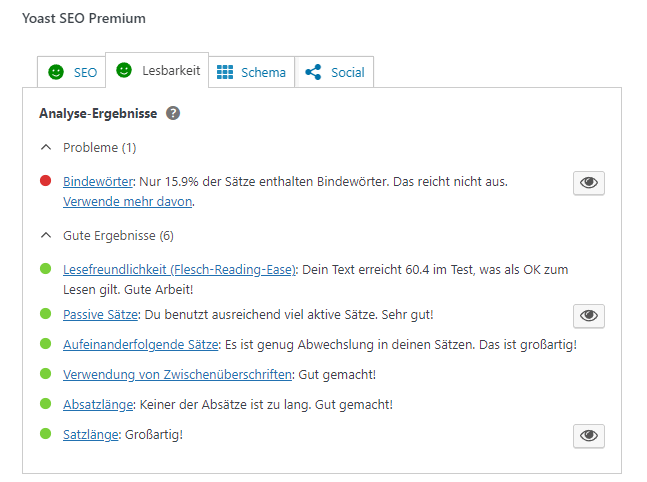
Especially when optimizing your texts, you can get valuable ideas with the suggestions. But remember, they are only recommendations, don’t let the traffic lights confuse you.
Some of the following WordPress SEO tips builds on these mentioned plugins.
2. Customize permalinks and keep them as short as possible
What many newbies underestimate are the permalinks or URL slugs of WordPress. The permalinks determine first of all the appearance of the URL itself. For example, it decides whether and how folders are displayed within the URL and whether names or IDs are used for posts. Here it is important to make sure that the URLs do not become too long at the end. Keywords should also be included, which is why IDs are not necessarily practical or recommended.
The slugs themselves are about the post and how it is rendered within the permalink. If the name of your article then reads, for example, “How to cook a vegan noodle pan”, the slug should be shortened so that it no longer contains filler words. The URL without shortening would then look like this for permalinks with names:
https://meinneuerblog.de/wie-ihr-eine-vegane-nudelpfanne-kochen-koennt
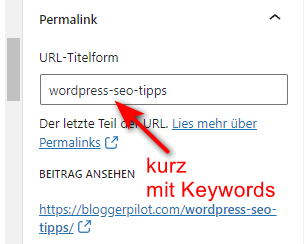
Ideally, however, the URL should be kept as short as possible and rich in keywords. So using the slugs you can shorten them and make them prettier this way. I would make them look like this:
https://meinneuerblog.de/vegane-nudelpfanne-kochen
Beginners tend to underestimate all this. However, the URL is very important. Among other things, because it appears more visually appealing and therefore increases the click-through rate. But also SEO-wise it makes sense to use a short URL, because Google only wants to see important things and the URL should therefore be freed from superfluous filler words. The minimal extra effort is therefore worth it.
3. Insert alt texts and captions for images
Images are valuable, especially in a blog. After all, many articles are about a particular topic, and it’s okay to show that. Let’s stay with the just mentioned pasta pan. The article image here could be the finished result. A steaming and delicious noodle pan that makes you want to see the actual recipe. But is that enough?
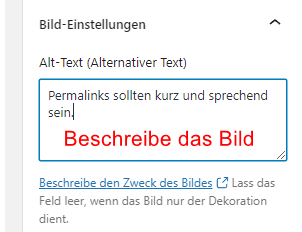
No, of course it isn’t. More images should be included throughout the article. In this case, then, for example, of the manufacturing process and the different stages, up to the finished dish on the plate. The important thing here is that each image is given an appropriately fitting alt text and caption.
Images always work best in terms of SEO when they have descriptive text around them. Simply inserting an image somewhere, on the other hand, does far less good. That’s why captions and alt text are so valuable. Take the time. Many who don’t have too much to do with SEO insert images, but forget to describe them accordingly. In the end, this is what makes the difference.
4. Optimize and compress what is possible
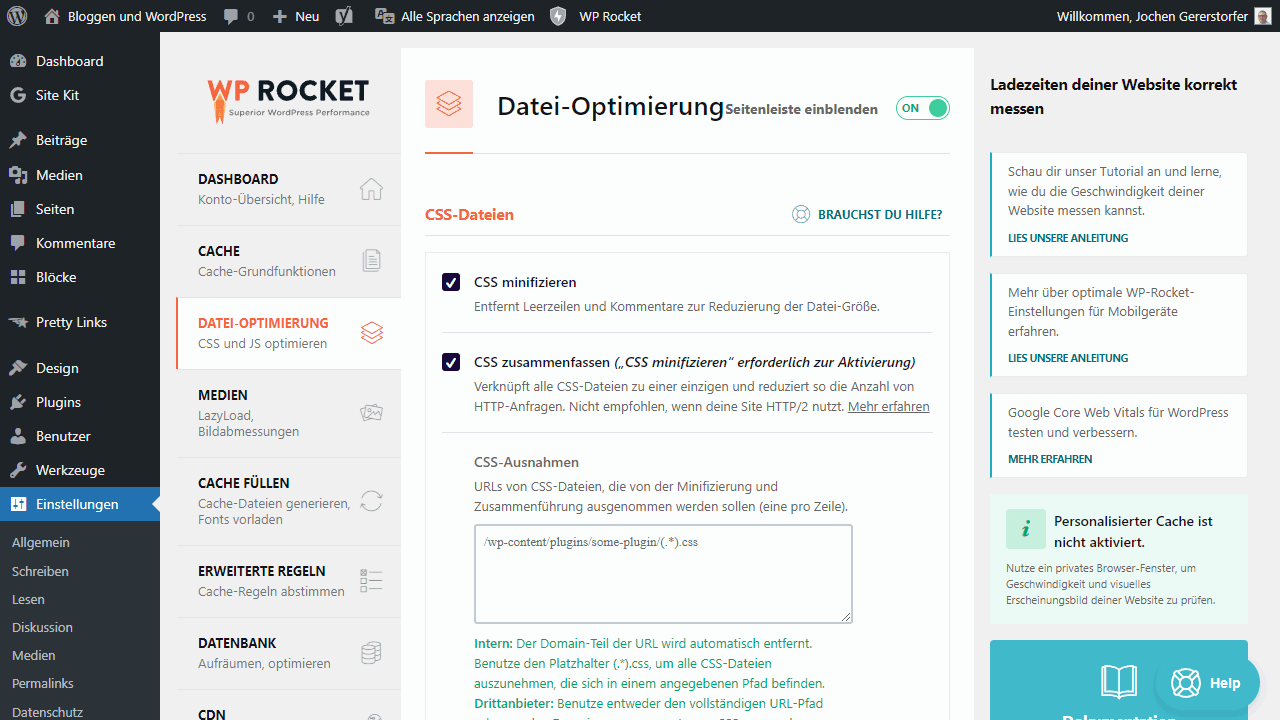
While we’re on the subject of images, let’s stick with this for a moment. Have you ever thought about compressing your images? You can virtually reduce the memory consumption of any image without it being visible in terms of quality. For this, there are many different WordPress plugins that do this compression automatically when you upload. ShortPixel or Imagify for example.
The result of this compression is that each individual image consumes less memory. This in turn means that they can be downloaded much faster by your visitors. The loading time decreases and of course Google likes that in the end. This WordPress SEO tip kills several birds with one stone.
By the way, the same applies to the source code of your website. With automatic tools like Autoptimize or caching plugins like WP Rocket, which already have such minify measures integrated, the code of your website becomes significantly smaller without changing anything for you. This reduces the loading times for your visitors, improves the values and thus automatically ensures a good search engine optimization again.
5. Generate sitemap and send it to Google

The sitemap is also often forgotten. Admittedly, it is not as important nowadays as it was a few years ago. Google can now crawl websites and blogs very well itself and also recognizes new or updated content without any problems. So a sitemap is usually not necessary for this.
However, here comes the but. With a sitemap it is simply faster. A sitemap signals Google much more efficiently when new content is added, old disappears or updates have been made. In WordPress, the sitemap can also be created automatically via plugins. The best thing is to enter it into the Google Search Console and add it to your website.
6. Do not index inferior content
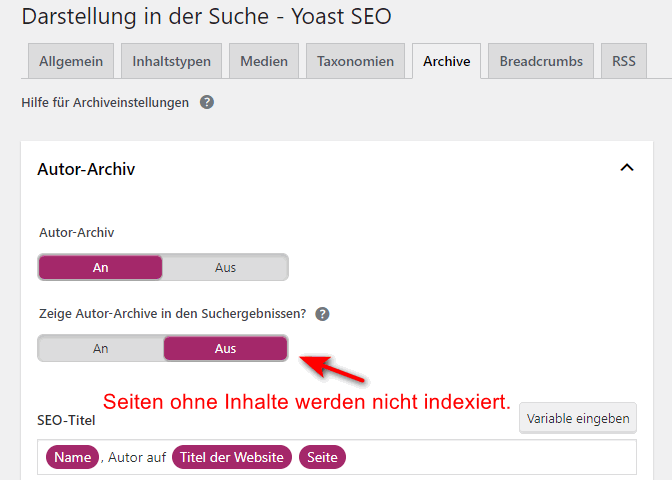
Here’s a tip for all those who have already implemented a lot and are still wondering why Google doesn’t want to move forward with SEO. Meanwhile it is so that Google does not like it at all if a website simply releases all contents without thinking about it for indexing. Inferior content should not be passed on to Google and in the best case not even appear on your blog.
First of all, this means category pages, tag pages, contact pages, and any forms of content that don’t add value. You should not let Google index such content. You will find the necessary settings for this in your SEO plugin.
Furthermore, we are clearly talking about articles themselves. Deleting content is as much a part of search engine optimization as creating it. Weak content no longer has a right to exist.
If an article consists of 300 words and has no real added value, then delete it completely from your page or revise it so that it becomes valuable. Content cutting, as it is called in English, means nothing more than removing what has no quality.
Get rid of it! SEO is more radical these days than ever before, and with good reason. So what has no added value flies out.
Why SEO is important even for small blogs and websites
The six WordPress SEO tips from above were my personal favorites, because it concerns exactly the aspects that are often forgotten. Sometimes WordPress SEO is simply underestimated. Yet these days, successful search engine optimization is about much more than just a few keywords and backlinks.
It’s all about quality content and perfect performance. It’s about not delivering just anything to Google anymore, but only the best of the best. WordPress has made it very easy to do just that, thanks to many plugins. At least if you know how to do it. Hopefully, the latter has now become clear.
I’m looking forward to your comments and of course practical experiences. So try it out immediately and adjust your blog accordingly. Good luck in the search results.
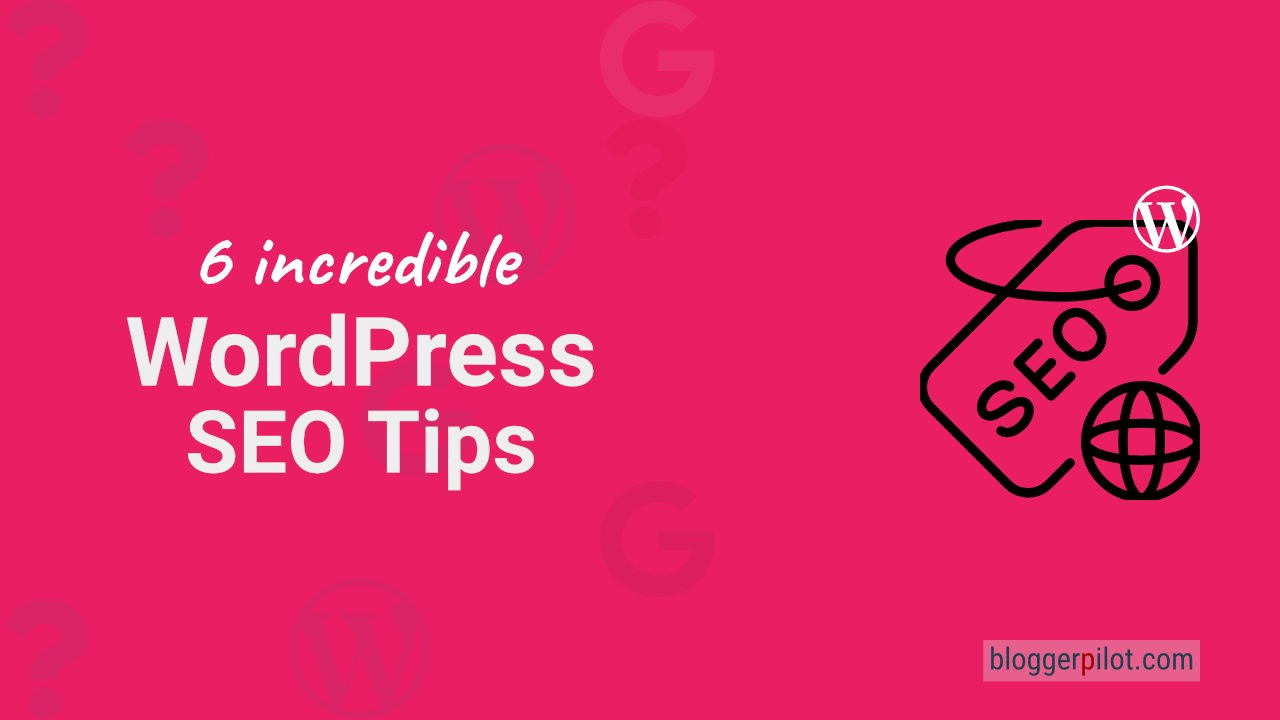
I looking article about Joomla SEO tipps. Any adivices?
Hey David,
sorry, I don’t write about Joomla, only WordPress.
Jochen